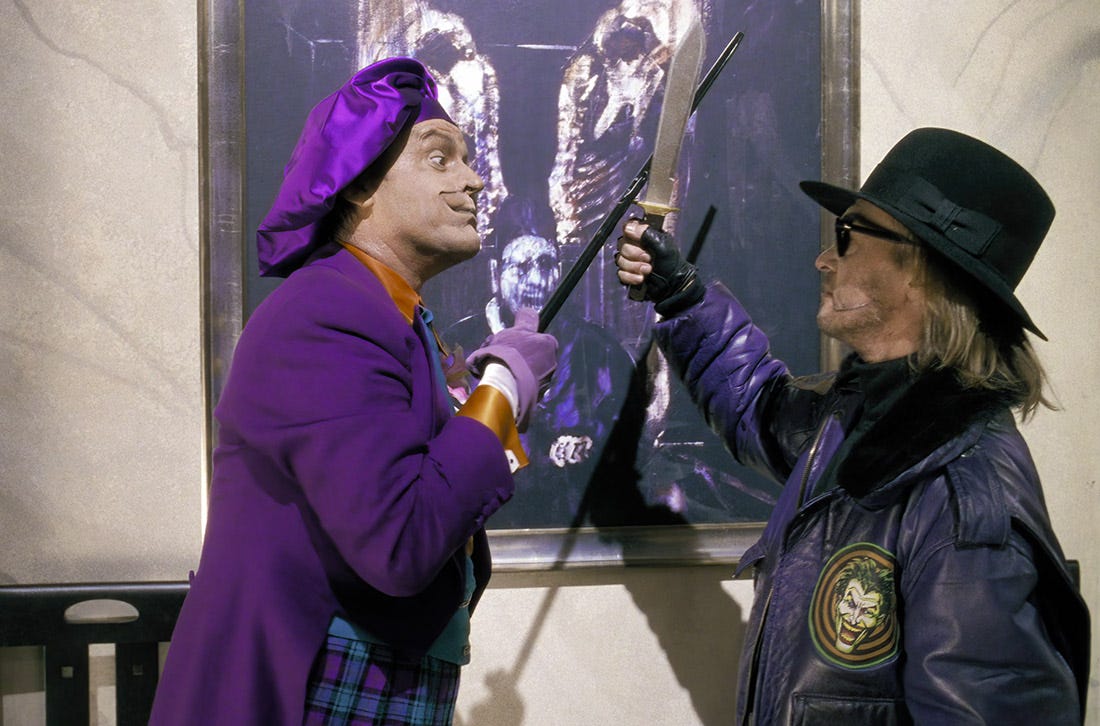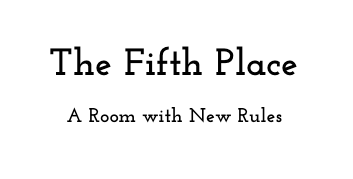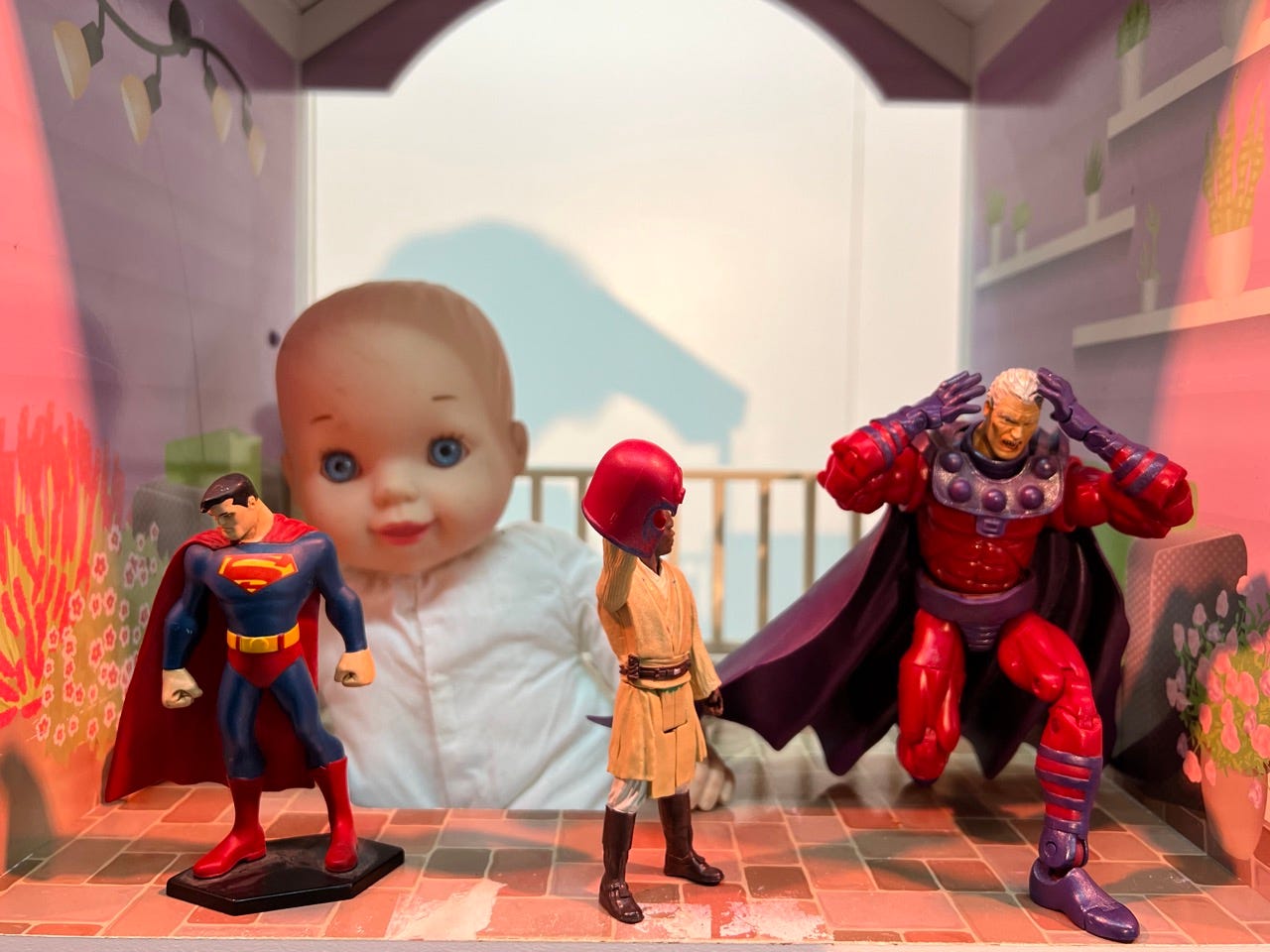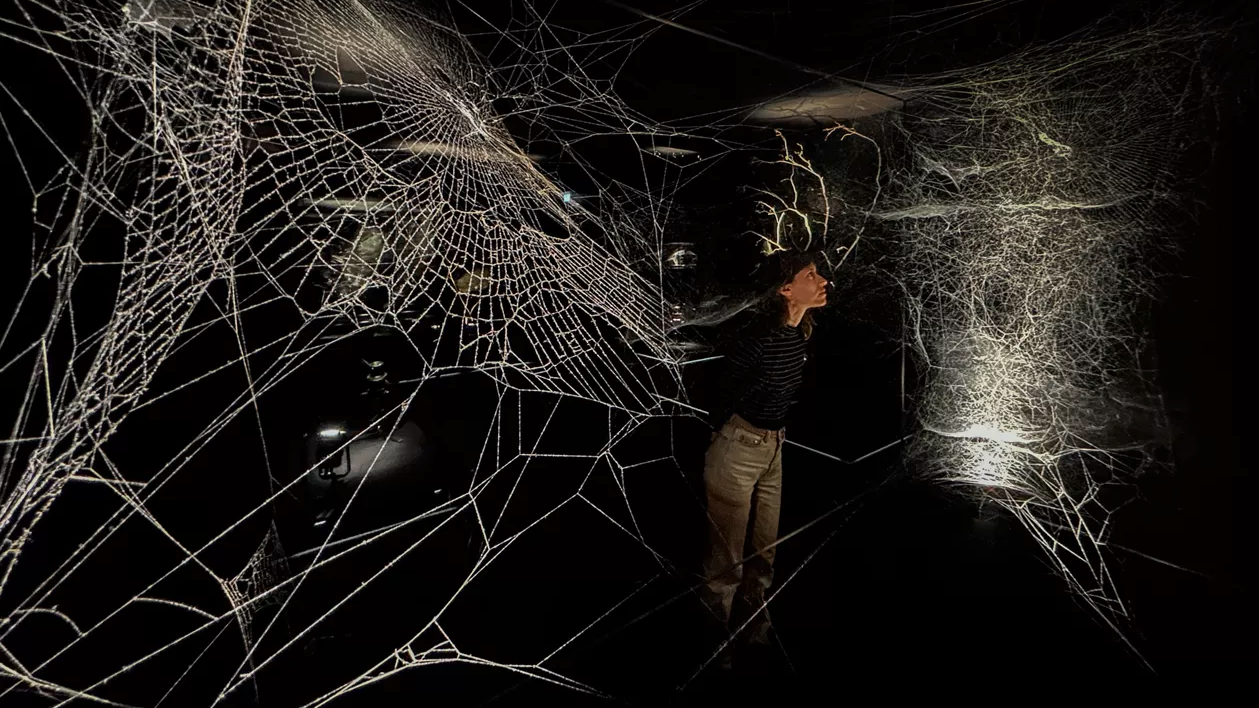Review Rundown: Art Amok!
Participatory Performance Art in NYC! Installation Art in London! A Play ABOUT Installation Art (Kinda) In LA! (THREE REVIEWS!)


Our period key is broken! So it’s exclamation marks for thee!
Okay, okay. Maybe it’s just the cold brew coffee talking. Maybe it’s the fact that we have an accidental thematic week with some really fun and challenging pieces in the mix. The kind that gives us an excuse to use a screenshot from a Batman movie.
Immersive: is it in the eye of the beholder or the affordances offered to that eye? Only your undertaker knows for sure.
Looking for more? How about what went down at the Toronto Fringe? Or perhaps you’re looking for things to do in Vegas or New Jersey? Look: we got a lot of these and the boss keeps shouting about shipping them out a whole new door so can you take these reviews off us. You know how he gets.
Are you a creator who looks upon these reviews with envy? Okay, the positive ones, at least? Then you might want to check out our How To Get Covered By NoPro guide. Want to get listed in our newsletter and have your event shared with our social media following? Submit a listing to Everything Immersive.
Keep No Proscenium free for all by becoming a Patreon backer today!

The Fifth Place — Michael Portnoy
Free; New York, NY; By invitation only
It’s necessary to keep details about The Fifth Place a secret, but essentially you get an assignment via email before you show up. You go to a public place. You converse with a small group of attendees following those instructions for about two hours before you abruptly disperse. That’s it. But the experience is the most absurd thing I’ve ever done in immersive research.
I’m not using absurd figuratively — I don’t mean bad or childish or silly. I mean absurd in the Dada sense of nonsensical and random as its aesthetic core. Constructed as an Oulipo-ian experiment in social gatherings, Michael Portnoy organizes different absurdists to create rules that the invited guests follow, creating playful experiences with words and ideas.
So what’s the experience? Here’s an sample:
Three people, including me (P3), stand in a circle.
P2 (to P3): So does that mean you are the leader of the Hartford School here?
P3: It seems so.
P1: Without Gregory, he would have to be.
P2: Yes, without Gregory. (to P1, referring to P3): Do you know his name?
P1: Yes
P2: What is it?
P1: That’s not something you just give without permission.
P2 (to P3): Does he know your name?
P3: Let me look. (Looks into P1’s eyes) Yes, he does.
(P1 removes his cravat from his shirt pocket.)
P3 (to P1): AGAIN!
P1: I’m sorry.
P2: What happened?
P3: This is the second time he has done that. It’s a … horrendous insult, in its pre-Columbian meaning.
P1: I apologize.
P3: And facing me? That means it was meant to be targeted to me.
P1: That was not my intent.
P3: This is the second time. I would have to conclude this was a conscious accident.
P1: It was not. I promise you.
P2 (to P3): How long have you been Gregory?
(long pause)
Keep in mind, I do not know what any of the following means: Hartford School, Gregory, the name business, why the cravat was in the pocket, conscious accident. There was no established world, no pre-material. We were all just riffing like that, non-stop, for two hours.
Your mileage is going to vary depending on how fun the above sounds to you. But it’s kind of amazing how willing everyone was to improvise having never met and having no shared world before. To me, The Fifth Place was a unique and exhilarating roller-coaster of nonsense.
– Nicholas Fortugno, New York Correspondent

Super Duper — Ghost Road Company
$45; Los Angeles, CA; Through July 27
Katherine Noon’s Super Duper is framed as the (last?) work of an unnamed artist, which reveals itself to be a life retrospective that unspools as a series of installations across three gallery spaces inside the Los Angeles Theatre Center.
Get No Proscenium’s stories in your inbox
Join Medium for free to get updates from this writer.
SubscribeSubscribe
The first installation is a series of seven short scenes, partly monologues and partly Q&A sessions driven by the actors. The monologues are, as a rule, good-to-excellent. The Q&A elements are, well they’re as good as Q&A can get. It’s a weak tool that a fair number of immersive creators lean on for interaction, putting the onus of the scene back on the audience to carry thematic elements without any real art to it. A couple of the actors delivering the scenes were a bit more adroit at masking the Q&A, but the overall effect was the same.
Which was a bit of a shame, as the Q&A dynamic set aside more interesting possibilities as the seven monologues painted a composite picture of The Artist, whose absence acts as a kind of polestar for each of the characters who themselves have archetypal names like The Ally and The Jester. A distressingly clear vision of The Artist as a real asshole, charismatic to be sure but seeming to lack positive qualities beyond charisma and talent, emerges from the monologues and doesn’t really get disabused over the course of the play.
Additional sequences build upon the characters introduced in the opening, the portrait of the absent Artist and his view of these people taking up more space — figuratively and literally — as the play goes on. Yet for every door opened, another, deeper one seems to be closed as we progress towards the finale.
I don’t think Super Duper could have worked as a traditional proscenium show; the intimate monologues and moving back and forth between rooms as the installations shifted really worked as thematic and theatrical effects. The installations themselves are pretty nifty, with the production team really nailing the art in a way that is simultaneously sincere and satirical. However, it didn’t dial in on what those tools afforded it, while at the same time it opened the door for some disruptive behavior from a misaligned audience duo.
I’d like to see Ghost Road Company continue to explore the form, especially if they hear the siren call of playing with multiple perspectives and the social contract. There’s a solid foundation in the ensemble and the production work that makes me want to see what they are capable of when they take the next step.
— Noah Nelson, publisher & podcast host, from his feature review

Web(s) of Life — Tomás Saraceno
Free, donation recommended; London, UK; Closes Sept 10
The worlds of art and design are rife with collaborations. Tomás Saraceno In Collaboration: Web(s) of Life is different.
This one is with spiders.
A continuation of Saraceno’s body of work, Web(s) of Life is extraordinary. Urgent, universal messaging about our climate crisis is interwoven with aesthetic cohesion and practical effect. Through explicit and subtle methods the show elicits keen awareness of our interconnectedness.
Its entrance is stark, the vague echo of an 18th-century apothecary. Preserved under glass is printed literature about lithium extraction in Argentina and its devastating effects on clean, accessible water for Indigenous communities. Visitors are greeted with the choice to surrender their mobile phones (the batteries of which are a key driver of lithium mining) as a gestural acknowledgement and a commitment to presence.
From there audiences move through three indoor galleries, two of which contain video installations. One video depicts an aerosolar balloon sculpture. A vehicle for advocacy, it was the first fossil-free human flight and the most sustainable flight in human history as certified by the Fédération Aéronautique Internationale. The other video is of Cameroonian spider diviners and includes an invitation to ask the spiders a question.
The show’s most captivating work is by the spiders themselves. Geometric intricacies of illuminated webs are on full display. The silks’ silver-to-gold gradient is stunning — and natural. Docents confirmed the webs were “unedited” (other than a local spider’s recent contribution to one of the sculptures). Some webs were housed in plexiglass while others were unenclosed, swaying from the displaced air of visitors. Despite their fragility and impermanence, they felt vast and cosmic (even mirroring a recent image from the James Webb Space Telescope). A stained-glass “arachnid confessional” was a surprise; the webs’ substitution for a priest felt appropriate, comforting.
Not only does the show spotlight our climate crisis, the exhibition itself is responsive to this existential threat. Newly installed solar panels are the sole supplier of power and the gallery’s climate control system has been shut off. Instead, doorways are open to allow for natural ventilation (and “the free movement of humans, animals, [and] insects”). Cloudy weather or temperature spikes directly impact which lights remain on and which galleries stay open (Ballad of Weather Dependency). While some critics dissent (“It all just feels a bit Spinal Tap”), there is no resonance — and certainly no behavioral shift — without real consequence. The sense of entitlement that everything we want should be immediately and forever available is precisely how we arrived at this event horizon.
A fascinating and singular co-creation, Web(s) of Life is a stunningly holistic interpretation. It’s an artistic embodiment of our modern ecosystems and an ultimate metropolis for the future.
— Laura Hess, Arts Editor
Note: The exhibition is responsive to weather conditions, on days of high temperature the gallery may close. Please check here for more information.
Discover the latest immersive events, festivals, workshops, and more at our new site EVERYTHING IMMERSIVE, new home of NoPro’s show listings.
NoPro is a labor of love made possible by our generous Patreon backers. Join them today!
In addition to the No Proscenium website, our podcast, and our newsletters, you can find NoPro on Facebook, LinkedIn,YouTube, Twitter, Instagram, in the Facebook community Everything Immersive, and on our Patreon Backer exclusive Discord.